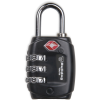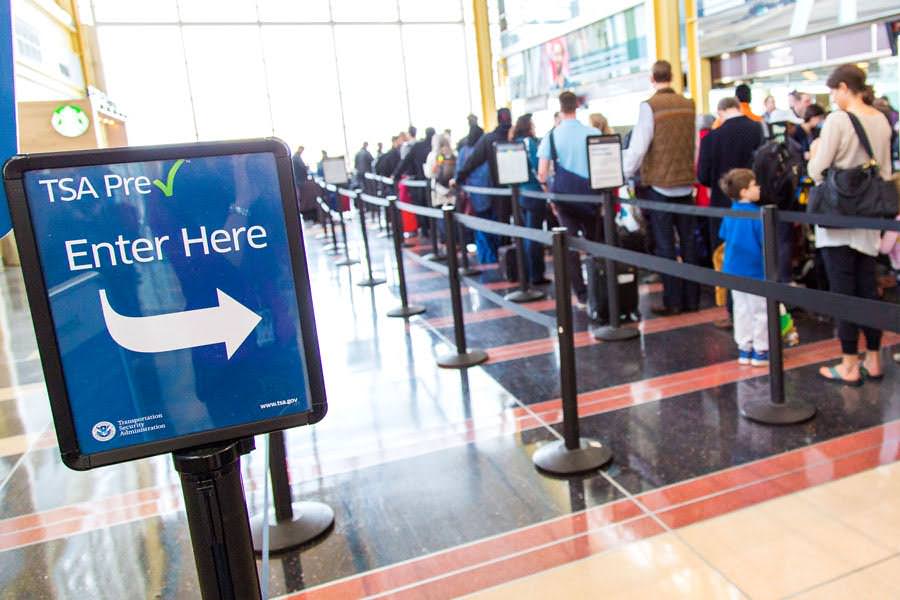Opinion
The Transportation Security Administration did not officially start requiring travelers to take off their shoes at the airport until August 2006. That was nearly five years after Richard Reid unsuccessfully tried to ignite explosives in his sneakers on an American Airlines flight from Paris to Miami.
The fear of Reid copycats was the ostensible justification for the TSA’s seemingly belated shoe rule, which the agency finally ditched last week, nearly two decades after adopting it. The longevity of that widely resented and ridiculed policy, which the U.S. was nearly alone in enforcing, illustrates the ratchet effect at work in security theater:
Even the most dubious safeguards tend to stick around because eliminating them looks like a compromise that might endanger public safety.
“We expect this change will drastically decrease passenger wait times at our TSA checkpoints, leading to a more pleasant and efficient passenger experience,” Homeland Security Secretary Kristi Noem said last week. “Thanks to our cutting-edge technological advancements and multi-layered security approach, we are confident we can implement this change while maintaining the highest security standards.”
That sounded like the fulfillment of a prediction that Janet Napolitano, one of Noem’s predecessors, made back in 2011. Napolitano said she expected the shoe removal policy would be phased out “in the months and years ahead” as a result of new screening technology.
Floor-Embedded Electromagnetic Shoe Scanners
A decade later, Axios reported that Napolitano’s prophecy was finally coming true, thanks to floor-embedded electromagnetic shoe scanners developed by the Pacific Northwest National Laboratory and licensed to Liberty Defense Holdings. Axios said the company planned to start installing its machines at airports “in about 18 months.”
That estimate proved to be overly optimistic. Last March, Secret NYC reported that the Department of Homeland Security expected to “begin planning an airport shoe scanner demonstration” in the third quarter of fiscal year 2026 and start testing the machines in the fourth quarter of fiscal year 2027.
Noem’s reference to “cutting-edge technological advancements,” in other words, seems like a red herring. Likewise her invocation of the TSA’s “multi-layered security approach,” which has been in effect for many years.
Noem evidently felt constrained to glide over the truth: The TSA’s shoe rule never made much sense. That is pretty clear from the fact that airports in other countries, including those overseen by highly security-conscious governments such as Israel’s, generally did not copy the American example.
Nearly fourteen years ago, The Washington Post noted that “there hasn’t been another shoe bomb attempt” since Reid’s fiasco. It added that “aviation security experts question whether shoe removal is necessary.”
One of those experts was the Massachusetts Institute of Technology’s Yossi Sheffi, who was born in Israel. “You don’t take your shoes off anywhere but in the U.S. — not in Israel, in Amsterdam, in London,” he told the Post. “We all know why we do it here, but this seems to be a make-everybody-feel-good thing rather than a necessity.”
John Pistole, then head of the TSA, cited survey data indicating that “shoe removal was second only to the high price of tickets in passenger complaints.” He nevertheless defended the policy.
“We have had over 5.5 (billion) people travel since Richard Reid,” Pistole said, “and there have been no shoe bombs because we have people take their shoes off.” His reasoning was reminiscent of an argument between two Muppets on “Sesame Street.”
When Bert asks Ernie why he has a banana in his ear, Ernie replies that “I use this banana to keep the alligators away.” An exasperated Bert notes that “there are no alligators on Sesame Street!” That fact, Ernie argues, proves his safeguard is “doing a good job.”
After Noem announced that the TSA was finally putting down its banana, George Mason University economist Bryan Caplan calculated, based on conservative assumptions, that the shoe rule had consumed “almost 30,000 years of life” in the United States. By that measure, Caplan suggested, Reid, despite his ineptitude, qualified as the “most successful” anti-American terrorist ever.
Live Inventory Price Checker

|
Bulldog Cases TSA Lock with Steel Shackle | GunMag Warehouse | $ 17.99 |
|
|
|
Bulldog Cases Hard Case Series Molded Double Pistol Case w/ TSA Lock, Textured Gray/Black - BD580 | Palmetto State Armory | $ 97.99 $ 71.99 |
|

|
Bulldog Cases Hard Case Series Molded Double Pistol Case w/ TSA Lock, Textured Gray/Black - BD580 | Palmetto State Armory | $ 97.99 $ 71.99 |
|
|
|
Bulldog Cases 2.25" Single Pack TSA Lock w/ Steel Cable - BD8022 | Palmetto State Armory | $ 24.99 $ 17.99 |
|
TSA Found 6,678 Unauthorized Firearms Among 904 Million Passengers in 2024
About Jacob Sullum
Jacob Sullum is a senior editor at Reason magazine. Follow him on Twitter: @JacobSullum. During two decades in journalism, he has relentlessly skewered authoritarians of the left and the right, making the case for shrinking the realm of politics and expanding the realm of individual choice. Jacobs’ work appears here at AmmoLand News through a license with Creators Syndicate.







Ok, so if Trump Admin can do that, then can Trump get Blondi’s 2A Task Farce to DESTROY the national gun registry at ATF?
In the days of bomb and drug sniffing dogs, why in the hell did we ever have to remove our shoes? Dogs are better at detecting stuff like that than we are!
Portland OreGONEistan, where walking into the airport with a side arm and not calling first and making arrangements for pick up can land you in jail, especially if it is loaded! That’s one of the reasons I call it OreGONEistan!!!!